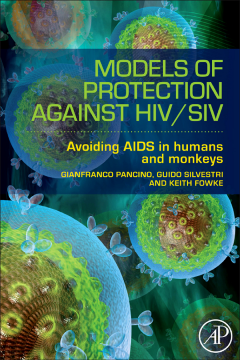
Additional Information
Book Details
Abstract
A successful vaccine for the prevention and/or immunotherapy against HIV/AIDS is one of the prominent challenges of the 21st century. To date, all human vaccine trials against this virus/disease have resulted in failure, or at best have shown very low efficacy. The scientific community dealing with HIV/AIDS has unanimously proposed a focus on basic science, with the intention of identifying correlates of protection that can serve as guides in developing and evaluating vaccine preparation. However, Nature seems to have already found several ways of dealing with infections by HIV and related primate lentiviruses, either by resisting infection or, once infected, avoiding immune damage and immunodeficiency.
Models of Protection Against HIV/SIV will allow for an in-depth reflection on the perspectives for vaccine and therapy research derived from important recent studies. It will be authored by some of the most well known specialists in the field of HIV resistance/protection: including F. Barré-Sinoussi (2008 Nobel Prize for Medicine winner), B. Walker, S. Rowland-Jones, A. Telenti, M. Lederman and F. Plummer.
This book is structured in a unique way, looking at three models of resistance/protection separately and then comparing the models against one another to provide its readership with a detailed examination of the research that is most predominant in the search for a vaccine. This structure presents the information in an easy-to-understand format and gives the book a cross-discipline appeal -- an important reference for those in the scientific community, medical care, public health and academia alike.
- Provides extensive descriptions and comparisons on the different models of protection agains HIV/AIDS
- Comprehensive writing and illustrations
- Contributors are among the most eminent specialists in the field
"Researchers in immunology, virology, microbiology, genetics, and other medical specialties from Europe and North America first overview the distribution and biological properties of primate lentiviruses and the emergence of HIV, including features of HIV-1 that distinguish it from HIV-2 and SIVs that replicate efficiently in African non-human primates without causing disease, and the development of these properties and their potential roles in the pathogenesis of AIDS. They then discuss immunological aspects of SIV in monkeys studied the most with respect to correlates of protection against AIDS, implications for therapy, whether some people are protected against infection, the genital mucosa in transmission, genetic factors contributing to resistance or susceptibility, the immune mechanisms that correlate with resistance, HIV controllers and viral factors involved, adaptive and immune responses associated with controllers, immune mechanisms of viral control in HIV-2 infection, and the genetic basis of protection." --Reference and Research Book News, Inc.
